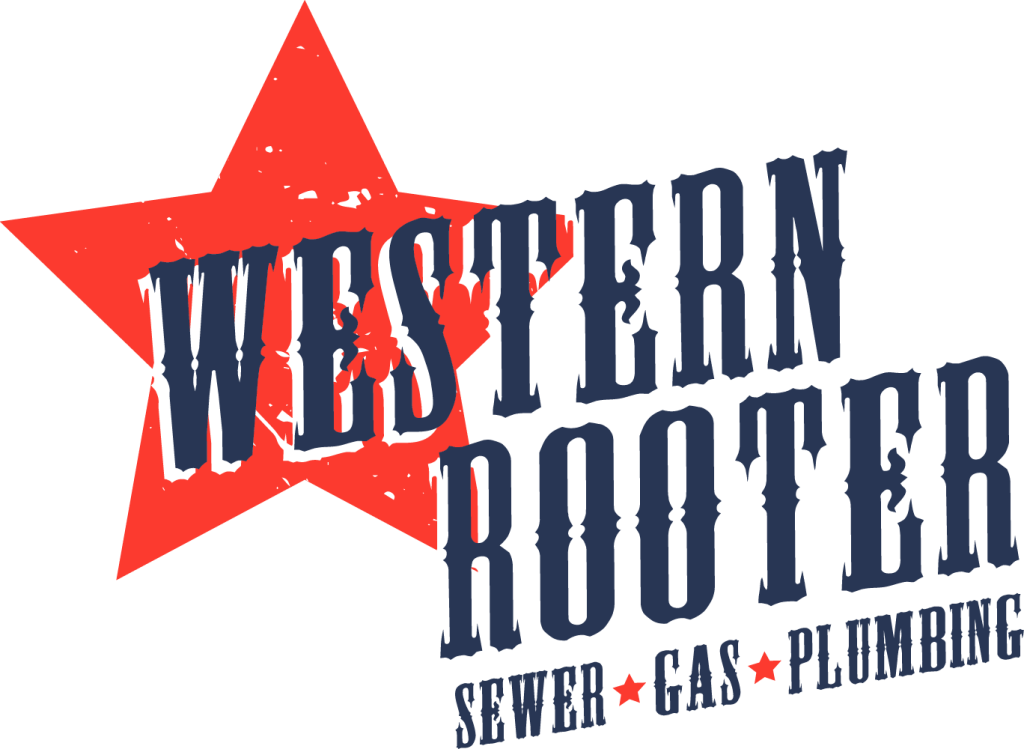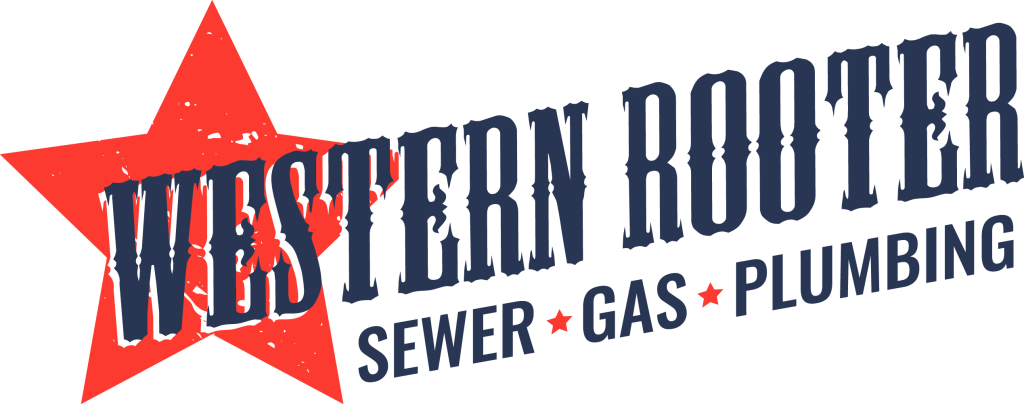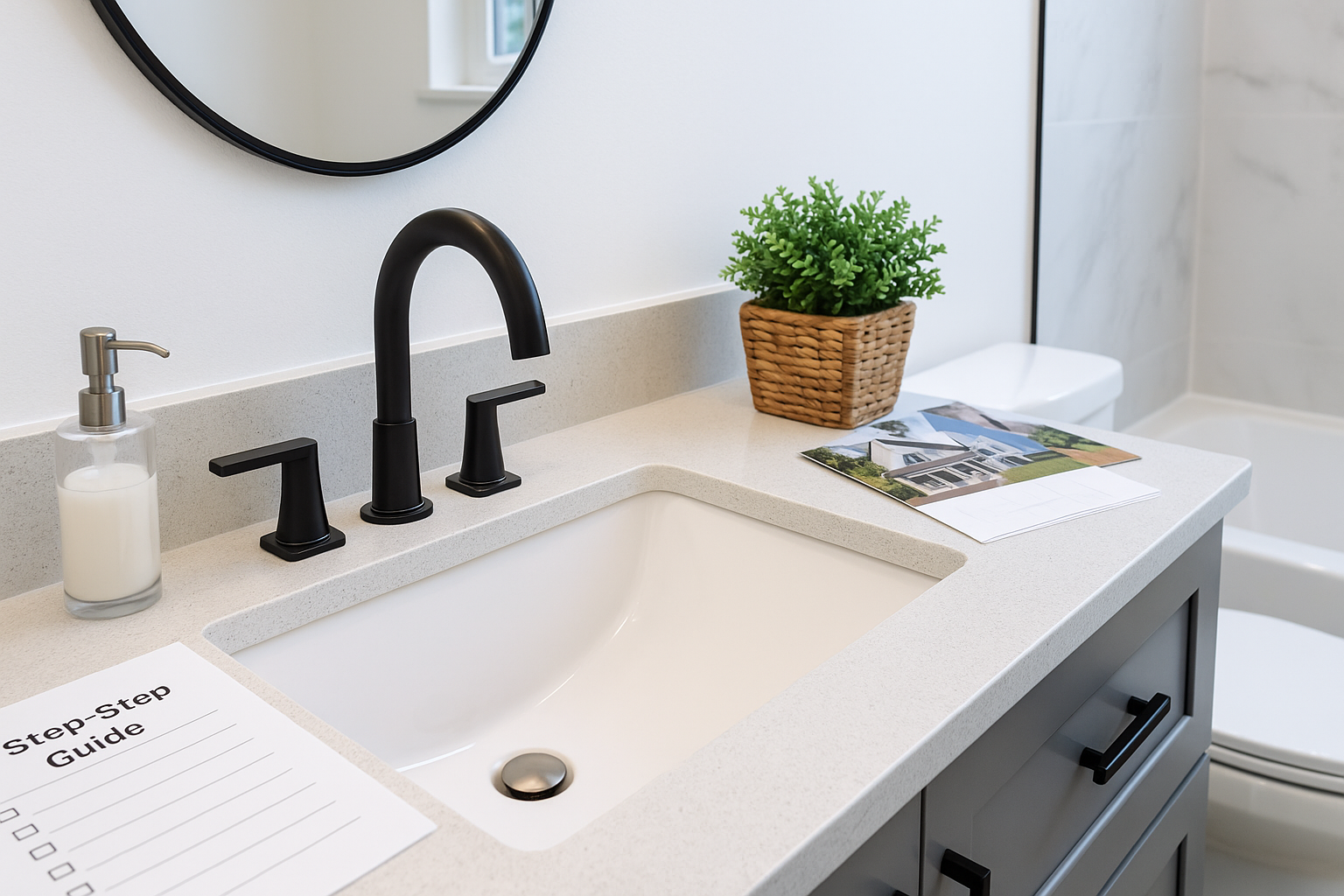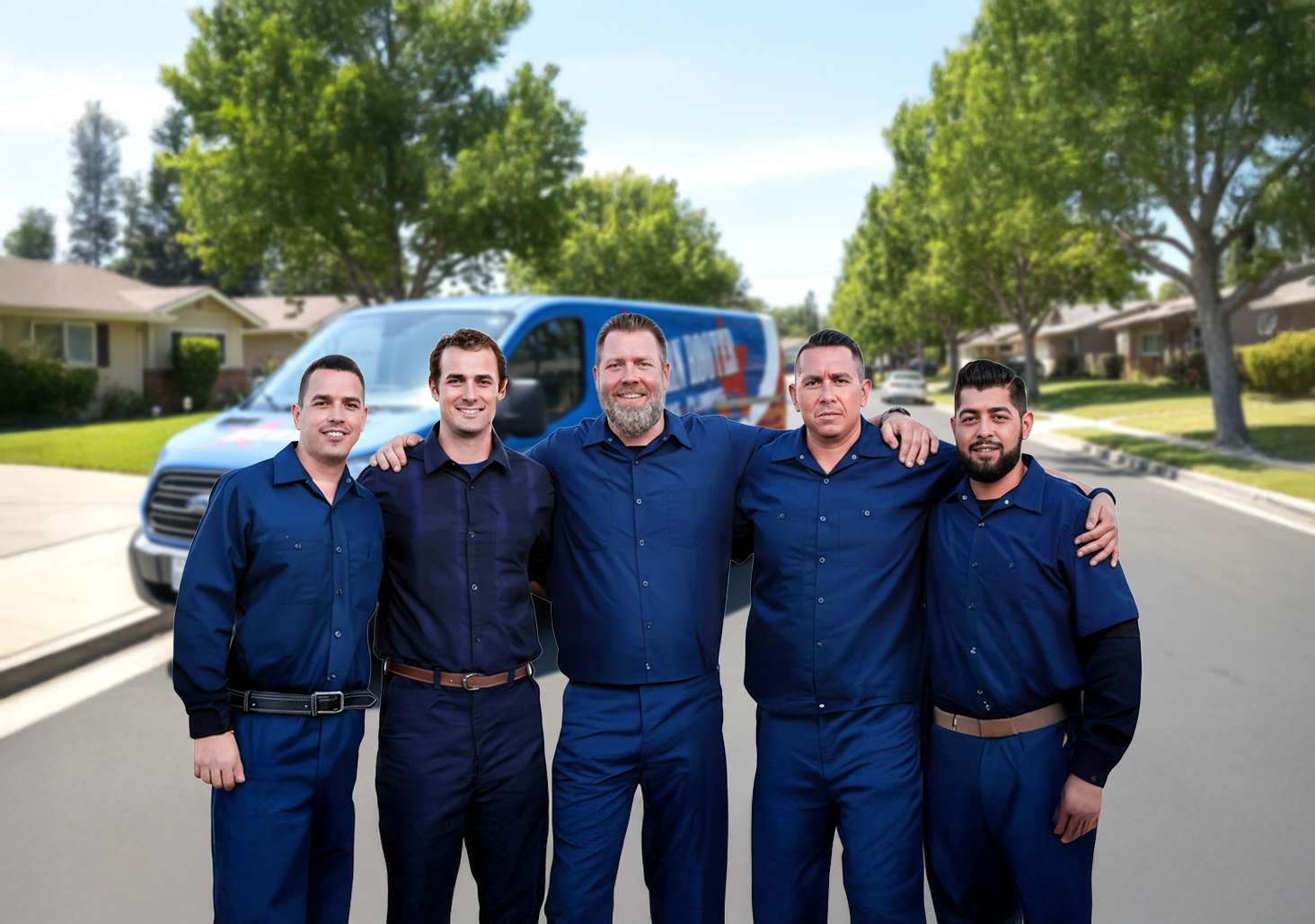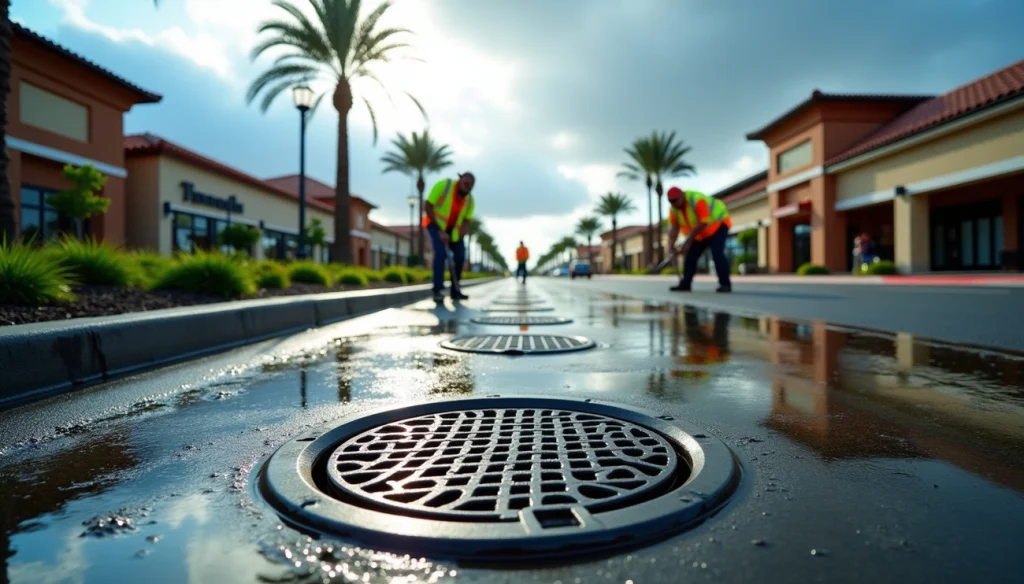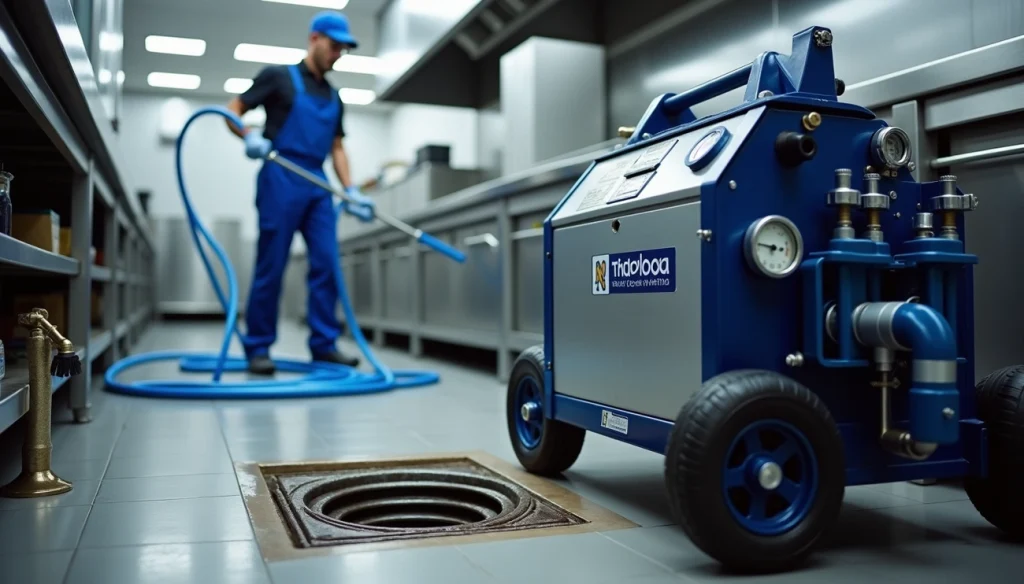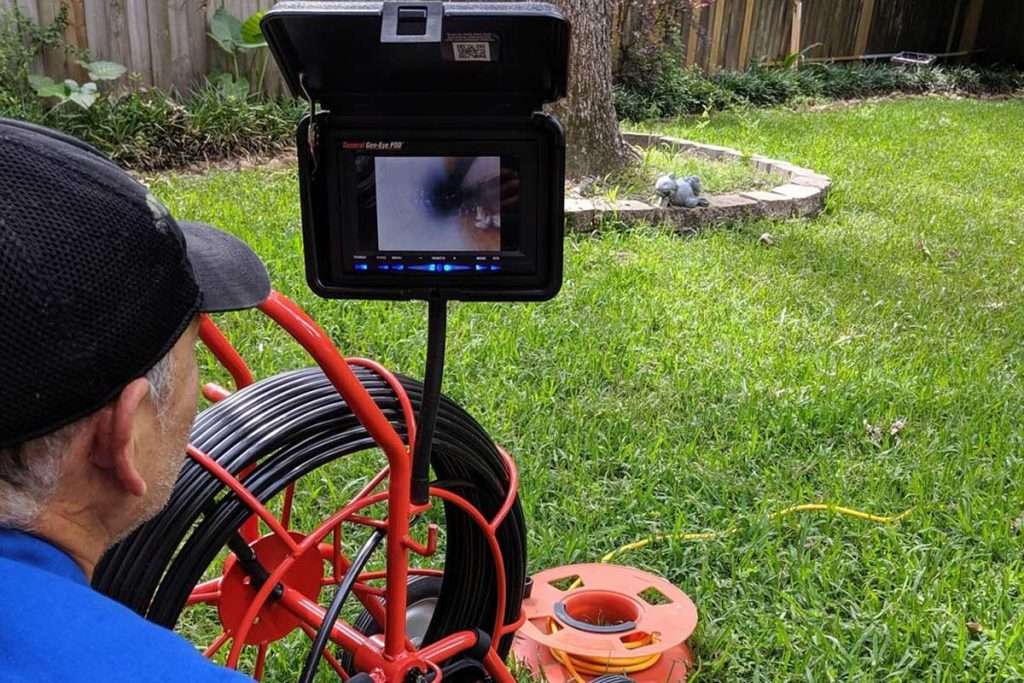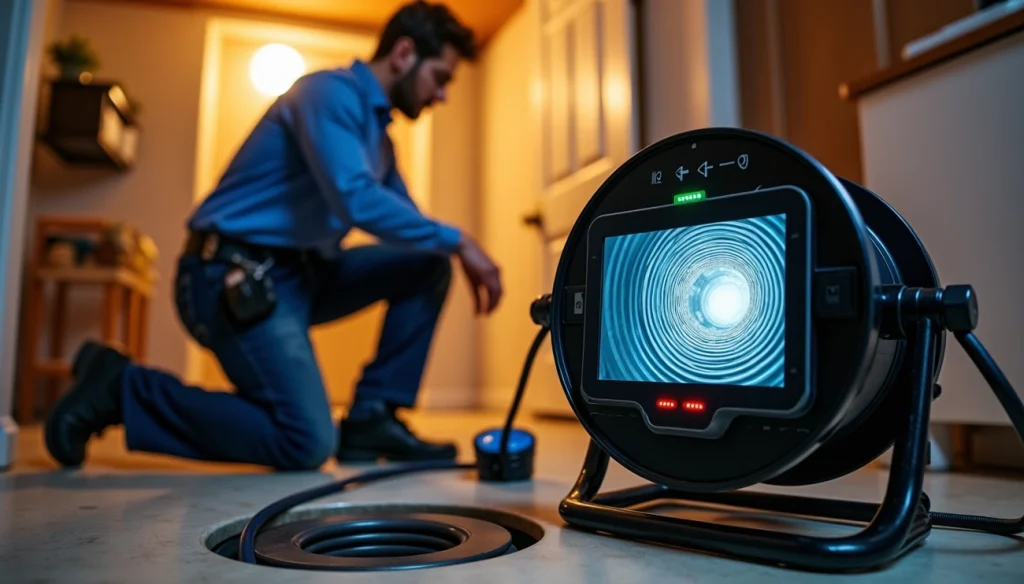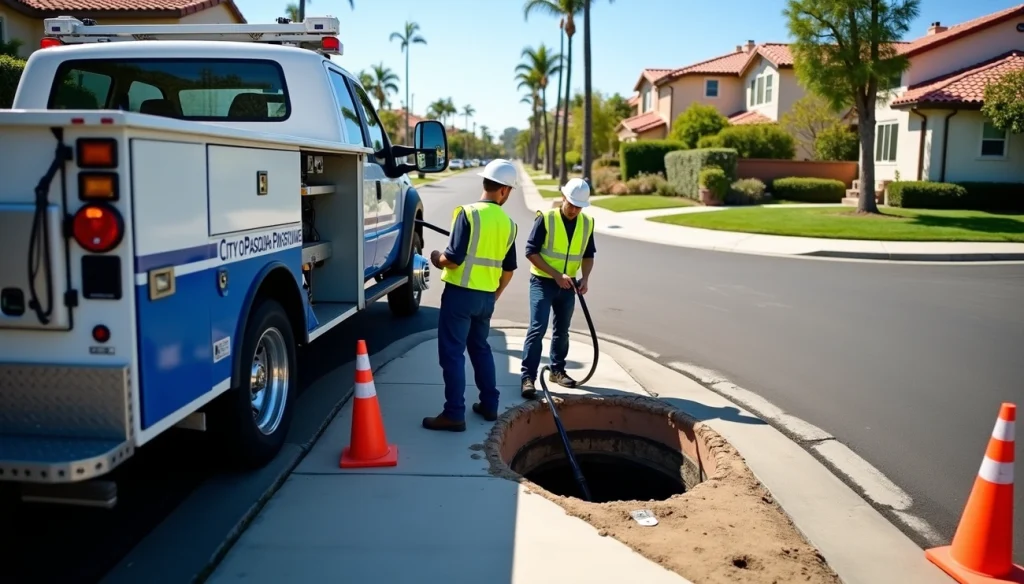Strategic plumbing upgrades can return 80% or more of your investment when you sell your home.
These overlooked improvements provide some of the highest returns in residential real estate. Modern plumbing upgrades change your property’s functionality, appeal, and efficiency significantly. Bathroom upgrades typically return 85-95% of investment costs during resale, and adding a second bathroom can boost your home’s value by 10-20%. Eco-friendly plumbing upgrades like low-flow fixtures can reduce your water bills by up to 30% annually. These features appeal to environmentally conscious buyers greatly.
Smart plumbing upgrades combine immediate utility with substantial resale value for homeowners planning to sell or invest long-term. Energy-efficient tankless water heaters provide 30% energy savings, and touchless faucets improve kitchen cleanliness. PEX piping and whole-house water filtration systems improve water quality while extending your plumbing system’s lifespan. These upgrades are smart investments for property owners who recognize their value.
Tankless Water Heaters
Image Source: Angie’s List
Tankless water heaters stand out as one of the most profitable plumbing upgrades homeowners can make. These compact, wall-mounted units heat water right when you need it instead of storing it in a tank. Your property gains several advantages from this modern approach.
Tankless Water Heaters Benefits
You’ll never run out of hot water with a tankless system. Cold showers during peak usage become a thing of the past. These units fire up only when hot water flows, which saves 24-34% on energy for households using 41 gallons or less daily. Homes with higher water usage still benefit from 8-14% better efficiency.
The savings go beyond just energy costs. A standard water heater lasts 10-15 years, while tankless models keep running for over 20 years. The space savings are impressive too. You’ll free up 10-15 square feet of storage space. This feature becomes especially valuable in homes where every square foot counts.
Tankless Water Heaters ROI Potential
The numbers tell a compelling story. Zillow’s research shows homes with tankless water heaters sold for 4% above expected value. These properties also sold 43 days faster. This price boost alone can cover your upgrade costs.
Your utility bills will thank you too. Tankless systems cut water heating costs by up to 50%. Gas-powered units save about $100 yearly. Over 20 years, you’ll pocket $2,000 in direct savings, not counting your property’s increased value.
The initial cost runs higher than conventional units. The break-even point usually hits between 10-15 years. After that, the continued savings and longer lifespan create pure profit.
Tankless Water Heaters Installation Tips
You should hire professionals to install tankless water heaters. Gas units need bigger gas lines because they use more BTUs per hour (90k-130k vs 30k for traditional tanks). Most homes need an upgrade from 1/2-inch to 1-inch gas lines.
Venting plays a crucial role. These models must vent directly outside rather than through chimneys. Pick a spot that allows easy exterior venting while meeting the manufacturer’s clearance requirements.
Expert recommendations to optimize performance:
- Pick a unit that matches your household’s peak water needs
- Mount it close to frequently used fixtures
- Add a dedicated shut-off valve and sediment trap as the manufacturer suggests
- Book yearly maintenance to clear mineral buildup and keep efficiency high
These guidelines help ensure your tankless water heater delivers maximum value and efficiency for decades.
Low-Flow Fixtures
Image Source: Rick’s Plumbing Service, Inc.
Budget-friendly plumbing upgrades like low-flow fixtures give you great returns. They save water and don’t cost much upfront. These state-of-the-art plumbing fixtures use less water than regular ones while working just as well.
Low-Flow Fixtures Benefits
Your home’s water use drops by 20-50% with low-flow fixtures compared to standard ones. You’ll see the difference in your water and sewage bills right away. Your energy costs will also go down since you’re heating less water.
Toilets make up almost 30% of the water we use indoors. That’s a big deal. New models can save thousands of gallons each year for a typical home. Today’s low-flow toilets need just 1.6 gallons per flush, while older ones use up to 5 gallons. The same goes for water-saving showerheads – they cut water use by 20% and save about 2,300 gallons yearly.
Money isn’t the only benefit here. These eco-friendly upgrades help protect our environment. Cities could cut their water use by up to 30% if everyone switched to low-flow fixtures.
Low-Flow Fixtures ROI Potential
The numbers make a strong case for low-flow fixtures. WaterSense toilets save about $90 yearly and pay for themselves in just over five years – that’s a 20% return on investment. Water-efficient showerheads save more than $50 per year with a four-year payback and 25% ROI.
A complete home upgrade to low-flow fixtures can reduce water use by 40% or more. The EPA says families save 700 gallons yearly by switching to WaterSense faucets. Your utility bills could drop by $200 each year.
Low-Flow Fixtures Installation Tips
Pick products with the WaterSense label. They’re government-certified and work better than basic low-flow options. Many states offer rebates on these certified products too.
Working with a tight budget? Start by upgrading individual parts. A new flapper valve, fill valve, or aerator saves money without the cost of replacing entire fixtures.
You can install showerheads and faucet aerators yourself. Bigger jobs like toilet replacements need professional help to work properly and meet local codes.
These water-saving upgrades will cut your utility costs quickly. They’ll also make your home more attractive to buyers and boost its value.
Smart Leak Detection Systems
Image Source: Connected Sensors
State-of-the-art leak detection systems lead the way in protective plumbing upgrades. Property owners can rest easy with advanced technology that guards against water damage. These innovative devices watch over your home’s water system 24/7 and alert you the moment problems surface.
Smart Leak Detection Systems Benefits
These advanced leak detection systems give you complete protection by watching your home’s plumbing non-stop. The devices spot moisture right away and send up-to-the-minute notifications to your smartphone when leaks happen. This early warning system stops small issues from turning into major structural headaches.
The systems do more than prevent damage – they help save water. EPA data shows all but one of these homes have leaks that waste 90 gallons or more each day. This adds up to about 10% of these properties’ water bills. Smart systems help preserve this precious resource through quick detection.
You can keep an eye on things even when you’re not home. Most systems link to your home’s Wi-Fi network. This feature comes in handy for vacation properties or homeowners who travel often.
Smart Leak Detection Systems ROI Potential
The numbers make a strong case for smart leak detection. Insurance data reveals 2% of American households file water damage claims yearly – that’s nearly 30% of all household insurance claims. Water damage repairs typically cost between $1,000 and $5,000, so prevention saves money.
Insurance companies see the value. They offer premium discounts up to 8% for homes with leak detection systems. One client got an amazing 3,400% ROI when their system stopped a leak that would have caused $300,000 in damage.
These systems pay for themselves within 7 years through insurance savings alone. Homes with smart technology also tend to sell for more, attracting buyers who want advanced protection.
Smart Leak Detection Systems Installation Tips
Different systems need different installation approaches. Simple point detectors cost $50-$100 per unit. You can put them near appliances or under sinks yourself. Advanced whole-home systems with automatic shutoff features usually cost around $500, plus $200-$350 for professional setup.
The best protection comes from putting sensors in leak-prone spots:
- Under sinks in kitchens and bathrooms
- Near water heaters and washing machines
- Next to dishwashers and refrigerator water lines
Look for systems that offer Wi-Fi connectivity, smartphone alerts, and work with other smart home platforms when making your choice. Maximum protection comes from combining multiple point detectors with a main shutoff valve that stops water flow automatically when it detects leaks.
Touchless Faucets
Image Source: Pioneer Industries
Touchless faucets combine luxury with practicality. They offer a hygienic upgrade that appeals to homeowners and property investors. These sensor-activated fixtures enhance your property’s modern appeal while delivering substantial benefits.
Touchless Faucets Benefits
We focused on how touchless faucets improve hygiene by eliminating the need to touch handles with dirty hands. Sink faucet handles contain about 3 million colony-forming units of bacteria per square inch—ten times dirtier than a pet’s food bowl. These faucets minimize the spread of germs and bacteria that build up on traditional handles because you never need to touch them.
Water conservation makes these fixtures even more appealing. They can cut water usage by 30-50% compared to standard faucets and shut off automatically when not needed. Many models also mix water with air to create a lower flow rate without losing pressure.
The convenience of touchless faucets goes beyond environmental benefits. They are a great choice especially when you have elderly family members, children, or people with mobility challenges. In kitchens, you won’t need to touch handles while preparing food or handling raw meat. This makes cooking both more efficient and safer.
Touchless Faucets ROI Potential
Touchless faucets create value through several channels. The water savings can reach up to 70% compared to traditional fixtures. This efficiency leads to lower water bills and lines up with eco-friendly living principles if you have environmental concerns.
These modern plumbing upgrades might not add huge direct value to home appraisals. However, as part of a detailed bathroom or kitchen modernization, touchless fixtures show potential buyers that a property has thoughtful, modern upgrades.
Touchless Faucets Installation Tips
Different models have varying installation requirements. Most touchless faucets need a power source—either batteries or connection to a 120-volt outlet under the sink. Battery-operated models are easier to install but need regular replacement. Hardwired versions offer better long-term convenience.
Your touchless faucet will work best with regular maintenance. Clean the sensors with a soft, damp cloth to keep grime from blocking signals. The faucet aerator needs yearly cleaning to remove sediment and maintain proper water flow. These simple steps will keep your touchless faucet working well for years.
Water Filtration Systems
Image Source: Superior Water
A whole house water filtration system does more than just improve your drinking water quality. This complete plumbing upgrade treats all water that enters your home and creates healthier living conditions throughout your property.
Water Filtration Systems Benefits
These systems remove many contaminants like chlorine, heavy metals, sediment, and harmful chemicals. Clean water protects your skin and hair from harsh chemicals. Your appliances last longer because minerals don’t build up. Food and beverages taste better when prepared with filtered water.
Health-conscious homeowners can avoid exposure to contaminants that might affect their health over time. Your clothes stay brighter and last longer when chlorine is removed from the water.
Water Filtration Systems ROI Potential
Whole house filtration systems make good financial sense. Buyers who care about water quality find homes with these systems more appealing. You can ask for a higher price and sell faster in competitive markets.
The money savings go beyond just the sale value. Your household can save about $1,350 each year by reducing bottled water use. On top of that, these systems shield your plumbing and appliances from corrosion and sediment damage, which helps avoid repairs that can get pricey.
Water Filtration Systems Installation Tips
The best place to install your filtration system is near where the main water line enters your home. This setup means all water gets treated before flowing through your property. Most systems work in multiple stages—they usually have sediment pre-filters, activated carbon media, and specialized post-filters.
Experienced homeowners might handle the installation themselves, but professional installation usually works better. Since you’ll need to cut into your main water line, proper placement and secure connections are vital to prevent leaks. Adding shut-off valves on both sides of the system makes filter replacements easier.
A quality system that gets proper maintenance should last 15-20 years. This makes it a smart and financially sound plumbing upgrade.
PEX or Copper Pipe Replacement
Image Source: Water Pros Plumbing
Your home’s aging plumbing system needs an upgrade, and it’s one of the most effective improvements you can make. Property owners can choose between PEX (cross-linked polyethylene) and copper piping, each offering unique advantages based on your property’s needs.
PEX or Copper Pipe Replacement Benefits
PEX piping bends and flexes easily, so you can snake it through walls with fewer fittings than rigid copper pipes. This flexibility reduces potential leak points and makes installation around obstacles easier. PEX also resists scale buildup and chlorine well, which means consistent water flow throughout its life.
In stark comparison to this, copper pipes have earned their status as “the gold standard” in plumbing, and with good reason too. These pipes last 50-70 years when maintained properly, outlasting PEX by 20-30 years. Copper’s durability also makes it resistant to UV damage and keeps rodents at bay.
Health-conscious homeowners will appreciate copper’s bacteriostatic properties that prevent bacterial growth inside pipes. PEX pipes excel at thermal efficiency and keep hot water temperature steady while reducing condensation on cold water lines.
PEX or Copper Pipe Replacement ROI Potential
New pipes can boost your home’s value by more than 200% in many cases. While buyers won’t pay extra just for new pipes, they need functional plumbing to pass inspections and avoid hesitation.
PEX costs about 25% less than copper, making it more budget-friendly. The cost gap widens further since PEX needs less labor and fewer fittings during installation. A detailed repiping project ranges from $4,500 for smaller homes to $15,000 for larger properties.
PEX or Copper Pipe Replacement Installation Tips
Most applications find PEX installation much easier. You can route this flexible tubing like electrical wiring, and it needs fewer connections and special tools. DIY enthusiasts can use manual PEX expansion tool kits for installation.
Copper installation requires more skill. Traditional methods use soldering with torches, which creates fire risks for novice installers. Modern copper systems can use press-fit or push-to-connect fittings that eliminate soldering.
The best results come from professional installation, whatever material you choose. A qualified plumber knows how to check pipe locations behind walls, shut off water supplies, and connect everything properly to your main water line.
Pot Filler Faucets
Image Source: Homes and Gardens
A pot filler faucet brings both luxury and practicality to your kitchen. This plumbing upgrade has become a favorite among homeowners who want daily convenience and better investment returns.
Pot Filler Faucets Benefits
The biggest advantage of pot fillers is how they eliminate the need to carry heavy pots full of water from sink to stove. These fixtures pump out water at 4 gallons per minute – more than twice what regular sink faucets deliver. You’ll prepare meals faster with this quick-fill feature, which helps a lot with pasta and other dishes that need lots of water.
Busy homes benefit from having an extra water source while the main sink handles other tasks. These fixtures are a great way to get better safety if you have small children or struggle with lifting heavy items, as they cut down the risk of spills and strains.
The practical benefits aside, pot fillers look stunning as design elements that break up walls of tile or stone. Their metallic finish matches your sink faucets perfectly. Modern kitchens often feature professional-grade elements, and this extra faucet adds both ease of use and upscale appeal.
Pot Filler Faucets ROI Potential
The investment returns on pot fillers are impressive. Homes with these fixtures sell for 1.5% to 3.2% more than those without them. Data from Zillow, analyzed by Angi, shows pot fillers add more value than other premium features – beating out pendant lighting (2.66%) and barn doors (2.32%).
The sort of thing real estate experts love is how pot fillers have gained appeal since people started cooking more during the pandemic. Buyers looking for luxury details and maximum convenience see these fixtures as must-have finishing touches.
Pot Filler Faucets Installation Tips
You should think over both wall-mounted and deck-mounted options before installation. Wall-mounted versions need a mounting bracket attached to a wall stud with water lines running through the wall. Deck-mounted options go right into your countertop near the stove.
Your kitchen’s layout affects costs in different ways. The fixture prices range from $150 to $2,000, and installation costs can add up. New plumbing might push costs up to $3,500, though most installations cost around $1,650.
Make sure your pot filler reaches all stove burners but folds away nicely when not used. You’ll also need a dedicated shut-off valve that’s easy to access for maintenance.
Rainfall or Spa-Style Showers

Image Source: Realty Times
A bathroom can become your personal spa sanctuary with rainfall or spa-style showers. These luxury plumbing upgrades give excellent returns on investment. Homebuyers who know quality will love the immersive experience these distinctive fixtures create.
Rainfall or Spa-Style Showers Benefits
Rainfall showers create a truly immersive experience that feels like natural rain falling on you. The wide coverage area will give you a more luxurious bathing experience than regular showerheads. These fixtures help you relax, detoxify your skin, soothe your muscles and rejuvenate your body.
Modern rainfall systems make temperature control a breeze. Premium models deliver water at the temperature you want within split seconds and keep it steady throughout your shower. You’ll waste less water since you won’t need to fiddle with temperature adjustments. This makes the shower both convenient and efficient.
The sleek, modern look of rainfall showers will lift your bathroom’s design. Even simple bathrooms look more appealing with these eye-catching fixtures.
Rainfall or Spa-Style Showers ROI Potential
Luxury shower upgrades typically show 65-75% ROI. Homes with spa-style bathrooms often sell at higher prices in competitive markets. We noticed buyers looking for modern conveniences are drawn to these features.
Here’s what different options cost:
- Mid-range remodels: $3,000-$10,000 (includes new shower stall, tiled walls, fixtures)
- Upscale installations: $10,000+ (includes multiple showerheads, body sprays, steam features)
Rainfall or Spa-Style Showers Installation Tips
You should think over your mounting options carefully. Ceiling-mounted fixtures give you that authentic rainfall feel. Wall-mounted versions with extended arms are easier to install but offer similar benefits. Remember that ceiling mounts usually need different rough-in plumbing than wall fixtures.
Height placement is crucial. A shower mounted too low creates headroom issues, while one that’s too high makes the water colder. You’ll get better results with professional help, especially for ceiling mounts that need new supply lines.
Water pressure can sometimes be an issue with these systems. Homes with low pressure might need handheld showers for better functionality. You’ll need to clean regularly since mineral buildup affects performance, particularly if pressure is already a concern.
Whole-House Water Softeners
Image Source: Fresh Water Systems
Hard water silently damages your home’s plumbing system and appliances. It also reduces your quality of life. A whole-house water softener solves these problems by removing calcium, magnesium, and other heavy minerals from your water supply. This makes it one of the most practical plumbing upgrades that add long-term home value.
Whole-House Water Softeners Benefits
Water softeners protect your home’s plumbing system from scale buildup. Your water heater will last up to 50% longer and use up to 29% less energy with soft water. These systems prevent leaky faucets, clogged pipes, and chalky films on dishes throughout your home.
You’ll notice significant lifestyle improvements with soft water. Your skin and hair feel softer after showers. Your colored clothes stay brighter, and dishes come out cleaner from the dishwasher. Soft water lets you use up to 50% less soap and detergent while getting better cleaning results.
Whole-House Water Softeners ROI Potential
Water softeners prove to be a smart investment. The average system costs about $1,500, and monthly operating costs are as low as $5. This reasonable investment saves money on energy bills, cleaning products, and maintenance costs.
Most water softeners pay for themselves during their 15+ year lifespan. Areas with harder water see even bigger savings. Simply put, harder water means greater potential savings.
Whole-House Water Softeners Installation Tips
Your water softener works best when installed at the earliest point in your home’s plumbing system. It should feed into your water heater instead of being downstream. This setup prevents hot water from damaging the softener while protecting your water heater.
The system needs 3 gallons per minute at the inlet, maximum water pressure of 125 PSI, and a 120V grounded outlet with circuit breaker protection. Planning these requirements early helps ensure smooth installation and peak performance of this valuable plumbing upgrade.
Modern Bathroom Fixtures
Image Source: DRF Builders
Modern bathroom fixtures are the life-blood of bathroom renovations. They blend beauty with function and create spaces that improve your daily life while boosting your property’s value.
Modern Bathroom Fixtures Benefits
Modern fixtures improve function through smart design. Trailblazing bathroom solutions adapt to your lifestyle with modular approaches that match your specific needs. These fixtures give you maximum comfort and design flexibility that fits your priorities instead of forcing you to work around fixed layouts.
Today’s fixtures come packed with personalization options. You’ll find inner-cabinet LED lighting and drawer organizers. Smart features include motion-sensor lights that turn on when you move, hands-free taps, sleek towel warmers, and mirrors with defoggers. People with accessibility needs can choose ADA-compliant features like curbless showers that look great and work well.
Modern Bathroom Fixtures ROI Potential
Bathroom renovations pack a punch as investments. A typical bathroom remodel adds up to 73.7% of its cost to your home’s value. More than that, these upgrades score 9.6 out of 10 on the Joy Score, which shows how happy homeowners are with their improvements.
Adding a brand new bathroom gives back about 63% of what you spend. Homes with modern bathrooms catch buyers’ eyes quickly. About 94% of real estate agents say updated bathrooms make properties more attractive to potential buyers.
Modern Bathroom Fixtures Installation Tips
New flooring makes the biggest visual impact in modern bathroom upgrades. Budget-friendly porcelain, ceramic tiles, or vinyl can look just like wood or stone while keeping water out. Homeowners in cold areas might want to add radiant-heat mats under the floor – they cost less than $150 for every 6 feet.
The latest trends show homeowners prefer bigger walk-in showers over bathtubs, especially in main bathrooms. Door-less and statement showers are hot right now, while whirlpool tubs have lost their appeal.
Professional installation often brings better returns through quality materials and expert craftsmanship that buyers love. Experts should handle electrical work, waterproofing, and structural changes to meet all building codes.
Modern Kitchen Plumbing Upgrades
Image Source: D & R Design Arizona
The kitchen serves as the heart of most homes, which makes modern kitchen plumbing upgrades valuable investments that blend daily convenience with improved home value. These functional improvements create a quicker and more eco-friendly kitchen space that goes beyond just looks.
Modern Kitchen Plumbing Upgrades Benefits
Multi-functional sinks stand out as a top upgrade with built-in features like cutting boards, colanders, and drying racks that make kitchen tasks easier while using less water. Their deeper basins help avoid splashing and work better for people who cook often. High-efficiency faucets with advanced aerators and flow-restricting technologies save water without losing pressure, which helps lower utility bills through smart design.
Built-in water filtration systems make water quality much better and help people drink more tap water instead of bottled options. This cuts down on plastic waste while giving you clean water for cooking and drinking anytime. Modern garbage disposal systems quickly break down food scraps to keep drains clean and smell-free, which means less waste goes to landfills.
Modern Kitchen Plumbing Upgrades ROI Potential
Kitchen upgrades give you good returns, and detailed renovations get back about 80% of costs when you sell. Buyers who care about the environment love high-efficiency fixtures that show the home’s good upkeep. Of course, updated kitchens with modern plumbing sell for more money because they show the property’s been taken care of properly.
These improvements make everything work better through improved water pressure and flow. They also stop future problems by replacing old systems that might leak or clog. Modern kitchens with upgraded plumbing usually meet current building codes, which helps avoid any issues when selling the property.
Modern Kitchen Plumbing Upgrades Installation Tips
High-arc kitchen faucets need to match both function and sink type. Your countertop’s or sink’s hole number and placement will show you which faucet options work best. Most installations work with an 8-inch spread between holes for standard centerset faucets.
You’ll get better results with professional installation, especially for complex upgrades like garbage disposals or built-in filtration systems. Simple faucet replacements remain doable for homeowners who like DIY projects if they prepare well. Whatever approach you take, make sure to turn off water supplies and add dedicated valves that make it easier to maintain individual fixtures.
Smart Water Meters
Image Source: Landis+Gyr | Blog
Smart water meters are changing the way property owners monitor and manage water consumption. These devices represent one of the most advanced plumbing upgrades available for modern homes.
Smart Water Meters Benefits
These digital devices let you track water usage immediately, which helps you understand consumption patterns and spot unusual usage right away. The results are impressive – within 30 days of installation, 60% of homeowners find leaks they never knew existed.
Smart water meters go beyond just finding leaks. They measure water consumption with perfect accuracy, so you pay only for what you use. Your privacy and convenience get a boost too, since no meter readers need to visit your property.
Property owners love the automated shutoff features that protect their homes. Some systems will automatically stop water flow once they detect a leak. This prevents devastating damage while you’re away from home.
Smart Water Meters ROI Potential
The numbers show these meters are worth the investment. Properties with these devices see revenue increases of more than 4.2% in just the first year after installation. Homeowners usually get their money back in less than nine years. That makes smart meters a solid financial choice.
Insurance companies see the value too. Many of them offer lower premiums for homes that have smart water monitoring systems. This adds even more value to your investment.
Water damage claims cost homeowners an average of $11,605. By stopping just one major leak, these systems can pay for themselves several times over during their lifetime.
Smart Water Meters Installation Tips
Location matters a lot when installing smart water meters. These systems work best when you place them at the earliest point in your home’s water supply. This spot lets you monitor all water that enters your property.
If you like DIY projects, you can find non-invasive options that clamp onto existing pipes without any cutting or modifications. But professional installation might be your best bet to ensure everything works perfectly with your home’s systems.
Look for models that work with smartphone apps and send alerts through text, email, or phone calls. This way, you’ll always know what’s happening with your water system, no matter where you are.
Recirculating Hot Water Systems
Image Source: Big B’s Plumbing
Hot water recirculating systems rank among the most practical eco-friendly plumbing upgrades you can make to your home. These systems will give you instant hot water at your faucets. You won’t waste time waiting, and you’ll save money while helping the environment.
Recirculating Hot Water Systems Benefits
These systems deliver instant hot water comfort throughout your home. A continuous loop circulates hot water through your pipes, so cold showers due to depleted hot water will become a thing of the past. The water savings are significant. A typical home with four taps wastes between 7,500 and 12,000 gallons each year while waiting for hot water. Homes that have five taps waste about 15,000 gallons yearly.
These systems protect your pipes from freezing during winter months. This benefit becomes extremely valuable if you have a larger home where fixtures sit far from water heaters. Your system will perform consistently even during the coldest days.
Recirculating Hot Water Systems ROI Potential
The return on investment looks impressive. Homeowners can save $844-$1,344 over ten years in water savings with a modest investment of $200-$400. The system pays for itself in just 1-3 years. This return beats many home improvements and some stock market investments.
Areas with water restrictions or high utility costs see even better financial results. The savings grow more substantial when you factor in reduced energy consumption from efficient water heating cycles.
Recirculating Hot Water Systems Installation Tips
Professional plumbers recommend these key installation steps:
- Your pump needs a central location to minimize hot water travel distance
- Timer controls should run the system during peak usage times to reduce energy use
- Hot water pipes need proper insulation to maintain temperature
- Systems with built-in temperature sensors work best as they shut off automatically when hot water reaches fixtures
Your system should last 5-15 years with proper care. Check for leaks, clean filters, and inspect electrical connections yearly to keep everything running smoothly.
Dual-Flush Toilets
Image Source: Constellation Energy Blog
Dual-flush toilets are champions of water conservation among eco-friendly plumbing upgrades. These fixtures give you two distinct flushing options that cut down household water use dramatically. What started as an Australian invention has now revolutionized mainstream water-saving solutions and will substantially boost your property’s efficiency and value.
Dual-Flush Toilets Benefits
The innovative two-option design in dual-flush technology saves water effectively. You get a partial flush (0.8-1.1 gallons) for liquid waste and a full flush (1.28-1.6 gallons) for solid waste. This smart design creates water efficiency without performance loss—some models cut water use by 67% compared to conventional toilets.
These toilets proudly display the WaterSense label and use 20% less water than standard 1.6-gallon models while meeting strict flushing guidelines. The fixtures deliver impressive performance through siphon jet technology that flushes with four times more power than the average adult needs.
Homeowners focused on environmental impact will appreciate how these toilets reduce water use. Toilets typically account for over 1/3 of bathroom water, which makes up nearly half of a home’s total water consumption.
Dual-Flush Toilets ROI Potential
The numbers make a strong case for dual-flush toilets. An average family that switches from outdated fixtures to WaterSense-labeled models cuts toilet water use by 20-60%. This saves nearly 13,000 gallons yearly and translates to $170 in annual water savings—about $3,400 over the fixture’s lifetime.
These toilets use almost half the water of older models and slash water bills accordingly. EPA averages show these fixtures save roughly 11,000 gallons yearly, putting $140-$180 back in your pocket through reduced water costs.
Dual-Flush Toilets Installation Tips
A dual-flush toilet installation works much like standard models. Professional installers will ensure proper placement and functionality, especially when dealing with older homes’ plumbing configurations.
The process includes old toilet removal, new gasket installation, toilet securing, tank-to-bowl attachment, and water supply connection. DIY-savvy homeowners can tackle this project, but professional help guarantees peak performance.
Your home’s plumbing age and configuration need careful evaluation before installation. Older homes with long pipe runs to main sewers need adequate water flow checks to avoid potential sewer issues.
Adding a Second Bathroom
Image Source: ContactOHi.com
A second bathroom is the ultimate plumbing upgrade to boost your home’s functionality and market value. This major addition pays off through everyday convenience and a higher property value, unlike smaller improvements.
Adding a Second Bathroom Benefits
A second bathroom gives your family and guests the privacy they need. Families with children can avoid morning bathroom conflicts and start their day without stress. Your overnight guests will appreciate their own dedicated space, which keeps traffic away from your personal bathroom and reduces germ spread.
The right location makes a huge difference. A first-floor bathroom helps elderly family members and people with mobility issues avoid climbing stairs. Your family will also have a backup plan when one bathroom has plumbing problems or someone’s sick.
Adding a Second Bathroom ROI Potential
The numbers tell a compelling story. A full bathroom can boost your home’s value by 10-20%, and even a half-bath adds about 10%. This translates to $20,000-$50,000 more in property value.
A midrange bathroom addition costs between $57,000 and $80,000, and homeowners typically get back 63% of this investment at sale time. The financial benefits are just part of the story – homeowners rate their satisfaction at 8.2 out of 10 with this upgrade.
Adding a Second Bathroom Installation Tips
Your bathroom’s location will affect both costs and usability. Converting unused space like a spare bedroom, large closet, or hallway end costs less than building an addition. The new bathroom should be close to existing plumbing to reduce expensive pipe extensions.
Space needs are modest – a half bath fits in 3×6 feet, while a full bath needs about 5×8 feet. Check your home’s plumbing capacity before starting. A single 3-inch sewer line can handle only three toilets before needing extra drainage.
This complex project needs professional help. Licensed plumbers and electricians must handle specific requirements, including dedicated ground-fault circuits that meet safety standards.
Conclusion
Plumbing upgrades are among the most powerful investments you can make in your home today. This piece highlights fifteen proven upgrades that give you immediate benefits and long-term returns. Your daily life gets better with luxury additions that boost your experience, while water-saving fixtures cut utility bills. These improvements deliver value that’s way beyond their original cost.
A tankless water heater is a smart investment. It provides endless hot water and cuts energy use by 24-34%, which makes your home more appealing to buyers. Low-flow toilets and touchless faucets can reduce water use by 20-50%. These modern upgrades show potential buyers that your property is up-to-date. Without doubt, eco-friendly changes appeal especially when you have environmentally conscious buyers – a growing segment in today’s market.
Protection upgrades need equal attention. Leak detection systems stop catastrophic water damage that makes up nearly 30% of household insurance claims. PEX or copper pipe replacements remove aging infrastructure worries and give impressive returns – over 200% in many cases. Water softeners make appliances last 50% longer while improving your home’s overall comfort.
The numbers make a strong case for these upgrades. Bathroom renovations get back up to 73.7% of costs. Adding a second bathroom typically raises home value by 10-20%. Even smaller investments like dual-flush toilets save about 13,000 gallons yearly, worth $3,400 over their lifetime.
You should assess your specific needs, budget limits, and property setup before starting any plumbing project. Complex upgrades like whole-house filtration systems or recirculating hot water loops need professional installation. Of course, qualified plumbers can help you pick improvements that will give maximum value for your situation.
Now is the perfect time to boost your property through plumbing upgrades. These improvements make daily living better while building equity in your most valuable asset. Whether you plan to sell soon or invest long-term, these fifteen upgrades are sound financial choices that pay off through practical benefits and increased property value.
Want to reshape your real estate investments through mutually beneficial property improvements? Schedule a customized strategy call with Primior today at https://primior.com/start/ and tap into your property’s full potential.
